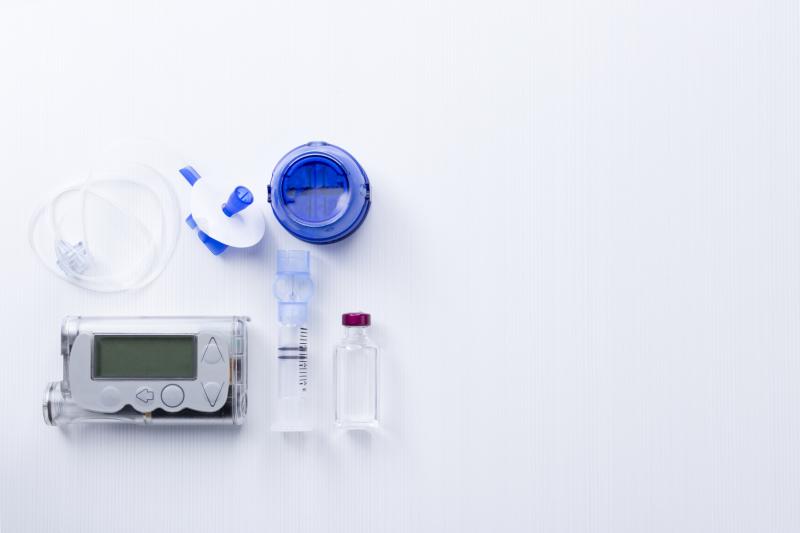 J&J recently said its insulin pump (not shown) is unencrypted, and as such can be vulnerable to hacking.
J&J recently said its insulin pump (not shown) is unencrypted, and as such can be vulnerable to hacking.An insulin pump with predictive low-glucose management (PLGM) appears to be effective for avoiding hyperglycaemia but may come with the risk of postsuspend hyperglycaemia, according to a Japan study.
“In this study, we found that PLGM significantly decreased the time in glucose <50 mg/dL but significantly increased the time in hyperglycaemia,” said researchers. “We noticed the presence of conspicuous hyperglycaemia after pump resumption probably because the timing of resumption did not match glucose movement.”
The retrospective observational study included 16 patients with type 1 diabetes mellitus (T1DM) who were switched into the PLGM device. An additional patient postpancreatectomy was also enrolled. Three months after pump change, levels of glycated haemoglobin increased significantly from 7.6±1.0 percent to 7.8±1.1 percent (p=0.0161). [J Diabetes Investig 2020;doi:10.1111/jdi.13288]
This was accompanied by a drop in the primary outcome of percent time in hypoglycaemia (<50 mg/dL), from 0.39 percent to 0 percent (p=0.0407). Even when the definition of hypoglycaemia was tightened to <70 mg/dL, a negative change in percent time was reported (1.3 percent to 1.23 percent), though statistical significance was not achieved.
These outcomes occurred despite no significant change in the average sensor glucose value and total daily insulin doses. There were also no episodes of severe hypoglycaemia and diabetic ketoacidosis.
On the other hand, the PLGM device led to a significant spike in the percent of time in hyperglycaemia (>180 mg/dL), from 25.53 percent at baseline to 32.9 percent after 3 months.
In the pancreatectomy patient, switching devices likewise reduced the percentage of time in hypoglycaemia (<70 mg/dL) from 0.15 percent to 0.05 percent. Glycated haemoglobin levels, in contrast, increase from 7 percent to 7.4 percent. This lone case presents the possible value of a PLGM device in patients after pancreatectomy.
“To avoid postsuspend hyperglycaemia, some patients manually restarted the pump within 30 minutes after suspension,” the researchers said. These patients showed a significantly lower percentage of time spent in hyperglycaemia (>180 mg/dL) over the next 3 hours than participants who let the device automatically restart (p=0.0063).
Time in hypoglycaemia (<50 mg/dL), on the other hand, was comparable between these groups.
“In this study, we found that an insulin pump with PLGM is an effective tool for reducing the time in hypoglycaemia in Japanese adult patients,” the researchers said, noting that postsuspend hyperglycaemia may be a side effect to watch out for. Manually restarting the pump before a meal could possibly help curb this.
“[O]ur data suggest that the patients who can manipulate pumps properly by accepting the guidance from healthcare professional would be good candidates to obtain benefits from 640G pump with PLGM,” they added.